Living in our northern country, I increasingly hear complaints about the struggle to overcome the heat. It’s hard to work when it’s scorching, hard to think, and hard to act. Many reach for ice cream or other quickly effective cooling pleasures. Yet the beauty of plants is that they cool far beyond just the digestive tract—they can help the body balance its thermoregulatory mechanism.
The Impact of Seasonal Changes
Seasonal changes can affect the body in countless ways. Although it seems obvious, we don’t always realize how powerfully our external environment reflects within us.
At this time of year, when the summer heat builds up outside, it can also accumulate within our bodies if balance and control are not properly maintained. Heat-related issues may manifest in many forms—both physically and emotionally. Think of skin irritations, rashes, hives, sunburn, heat exhaustion, heatstroke, headaches, burns, acid reflux, diarrhea, excessive sweating, ulcers, irritability, anger, disappointment, and restless sleep.
Nature’s Cooling Aid
But rest assured—the plant kingdom is here to help your body stay cool, calm, and balanced during the heat. In this article, you will learn about the cooling nature of certain medicinal herbs, how to use them, and which specific plants can help you remain cool this summer.
Understanding Cooling Plants
Holistic View in Traditional Medicine
Most ancient traditional medical systems view both plants and people holistically, assigning natural qualities to help understand our overall condition.
According to many herbal traditions, plants are classified as warming, cooling, or neutral. These properties reflect not only a measurable thermal effect but also the overall sensory influence on the body, mind, emotions, and spirit.
Determining a Plant’s Effect
Taste can help determine whether a plant will have a warming or cooling effect. Sweet, bitter, and pungent flavors may indicate a cooling action. While cold items like ice or chilled drinks can temporarily cool the body, cooling herbs often offer a deeper, longer-lasting effect.
How Cooling Herbs Work
Cooling herbs influence the body in several ways:
- Cooling: They lower body temperature by cooling tissues—for example, Lemon Balm or Hibiscus. These substances can also have a soothing effect.
- Drying: Some herbs promote fluid loss, which helps reduce body heat.
- Astringent: Astringent herbs draw out excess water from tissues and boost urination, thus aiding in heat reduction.

Ways to Use Cooling Plants
Ingestible Applications
There are many ways to enjoy the benefits of cooling plants. Drinking herbal tea is a superb method to harness their properties. This summer, consider preparing a large batch of tea, adding your preferred sweetener, and keeping it in the refrigerator to enjoy over several days.
Topical Applications
Local application of cooling herbs is also highly effective—spritzing with a hydrolate or applying oils, lotions, and creams can refresh the skin after sun exposure. If you’re curious but unsure how to proceed, consider listening to a lecture on “Natural Body Care” where you can find various recipes and methods.
Direct Skin Treatments
For a simpler approach, plants like Aloe Vera can be applied directly to the skin without any elaborate preparation. You can either buy Aloe Vera gel or cut it directly from the leaf and apply it. Such cooling plants can significantly help reduce skin irritation, sunburn, or dryness.
Cooling Herbs for Summer
Mints
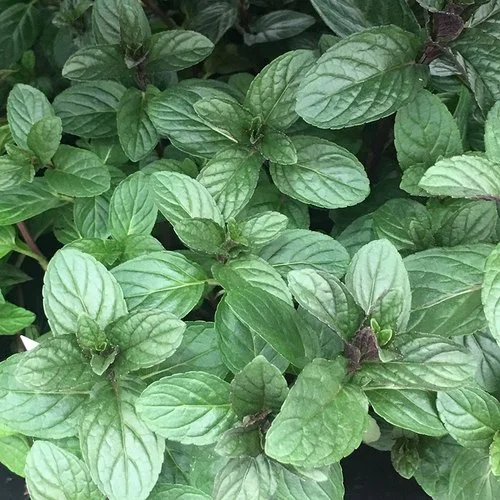
There are many varieties of mint, some sharp and some cooling. Peppermint and spearmint are particularly popular for their cooling qualities and are invaluable additions to your herbal kit. Mint family plants are often used to soothe stomach issues, digestive disorders, sore throat, headaches, fever, and flu symptoms. Traditionally brewed as tea, they also help calm the mind and nervous system. In Ayurveda, mint is believed to have a cleansing and dilating effect that can help reduce mental tension [1]. When applied topically as an herbal infusion, oil, ointment, or cream, mint produces a stimulating, cooling sensation due to its menthol content. Consider making a fresh, cold mint tea and sipping it throughout the day to beat the heat.
Coriander
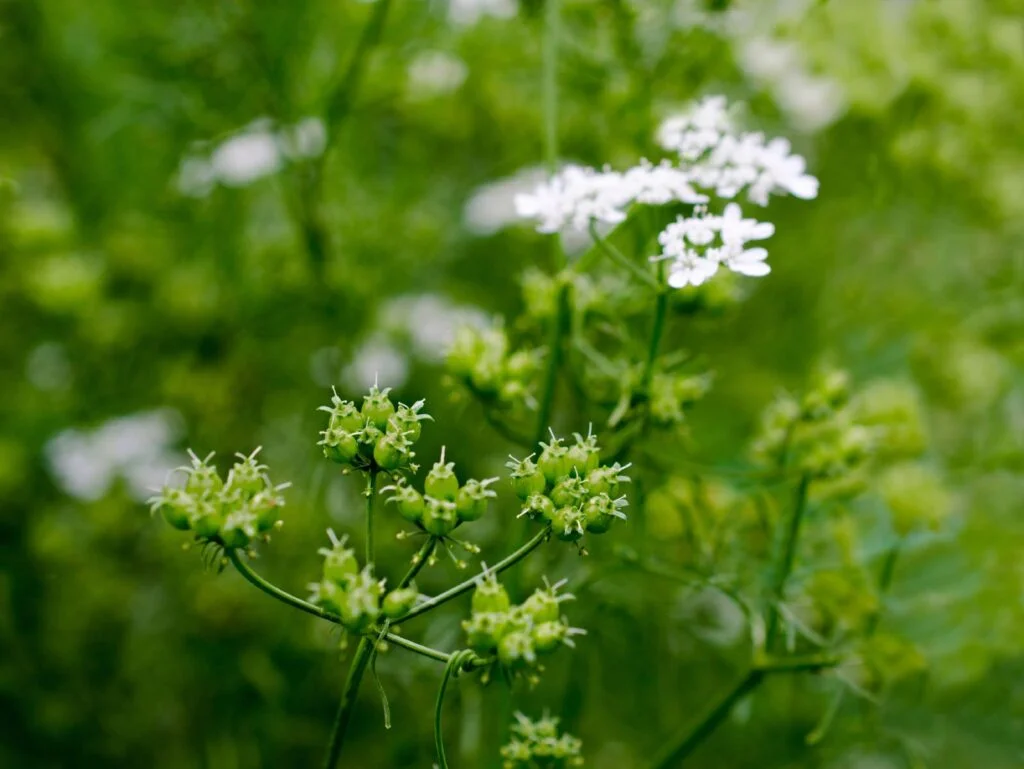
Coriander has a distinctly bitter taste and cooling effect. Both its seeds and fresh leaves are widely used in herbal medicine to improve digestion and intestinal absorption. Traditionally, coriander is often combined with cumin and fennel in teas or culinary preparations. Fresh coriander juice is celebrated as a remedy for allergies, inflammations, urinary tract infections, sore throat, and various skin issues. For rashes, itching, or burns, you can grind fresh leaves into a paste and apply it directly to the skin for a cooling, soothing effect. The simplest way to enjoy coriander is to use its fresh leaves as a garnish, or add coriander powder or whole seeds to your dishes. Additionally, coriander hydrolate is a wonderful option for both skin care and flavoring beverages.
Rose
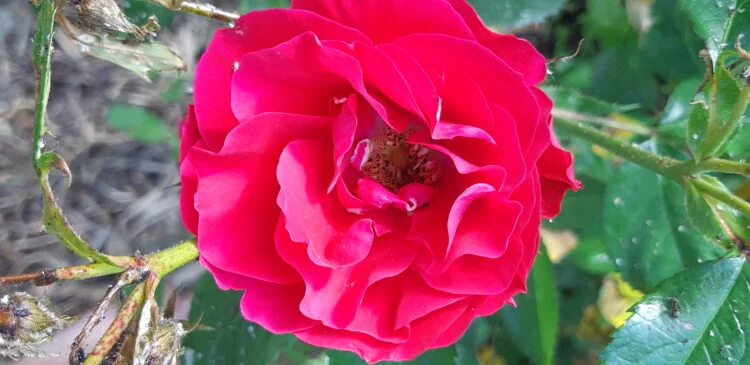
This summer, roses have become one of my favorite cooling herbs. They are incredibly versatile. Rose petals are excellent for topical use when prepared as a serum, oil, lotion, or cream. Their soothing properties help reduce redness, rashes, and other irritations. Roses are also known to alleviate symptoms associated with arthritis and joint inflammation [3]. For local use, you can purchase rose essential oil or create your own infusion by diluting it in a carrier oil such as sunflower, almond, coconut, or grapeseed oil. You may also use rose hydrolate—spray it liberally on your skin on hot days to stay cool and refreshed (keeping it chilled in the fridge adds an extra burst of cool).
Wild rose fruits, or rose hips, have a sour and astringent taste yet are considered both cooling and drying. Rich in vitamin C and antioxidants, rose petals and buds have traditionally been used in teas to treat digestive issues like diarrhea, dysentery, colitis, constipation, and inflammatory conditions [3]. Moreover, roses have a mystical quality related to heart health and have historically been recommended for general weakness, cold and flu symptoms, and even to regulate menstruation [3].
Hibiscus
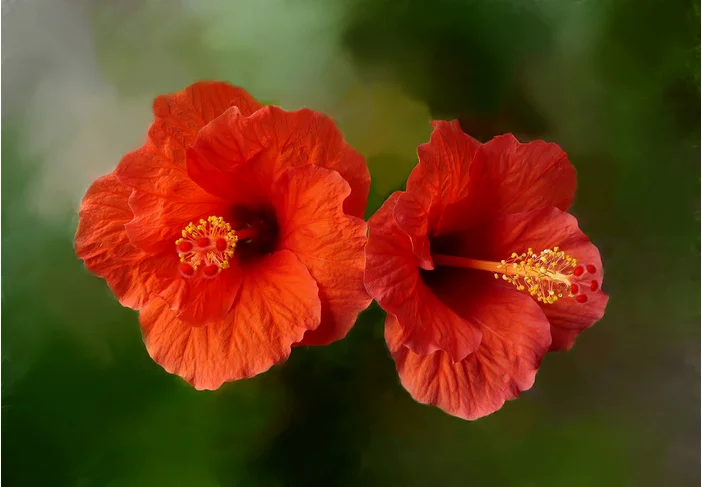
Hibiscus is noted for its astringent, sweet, and cooling properties, making it an excellent herb to help cool you during the summer heat. Traditionally, in many cultures, Kinrožė flowers have been used as incense and tea for healing purposes. Today, Kinrožė tea is popular for its potential to reduce blood pressure. Although its aroma is delightful, always consult a doctor before incorporating any herbal tea regularly into your diet. Historically, Kinrožė has also been used as an emmenagogue—to stimulate menstruation and relieve menstrual cramps—and is said to heal and stop ulcers due to its cooling properties [2]. Its sweet, floral fragrance makes it an excellent natural incense to clear a stressed mind, while its antioxidant properties have led to its topical use in maintaining healthy skin and hair.
Sandalwood
In Ayurveda, sandalwood is regarded as having a bitter, sweet, and astringent taste [1]. Because of these qualities, it is said to exert a calming, cooling, and stimulating influence on both the body and the mind. For thousands of years, sandalwood has been used in medicine to help alleviate inflammations and various heat-related issues. It can help relieve headaches, stress, and even emotions of anger or disappointment, as well as combat insomnia. Acting on the nervous system, sandalwood—when used as an essential oil or incense—can relax the mind in times of tension, stress, or anxiety. Although its essential oil is costly, its cooling and soothing effects make it worth blending into a carrier oil (such as grapeseed oil) for treating inflammations, acne, rashes, dryness, irritation, psoriasis, and other skin conditions. In Ayurvedic practices, sandalwood oil is often used in marmos therapy—a traditional massage technique—and applied to various energetic points (for example, the area behind the “bamboo” or at the groin/narrow waist, known as the main “pitta dosha” zone, which is the center of heat and transformation) to help expel excess heat and reduce stress.
Lemon Balm (Melissa Officinalis)
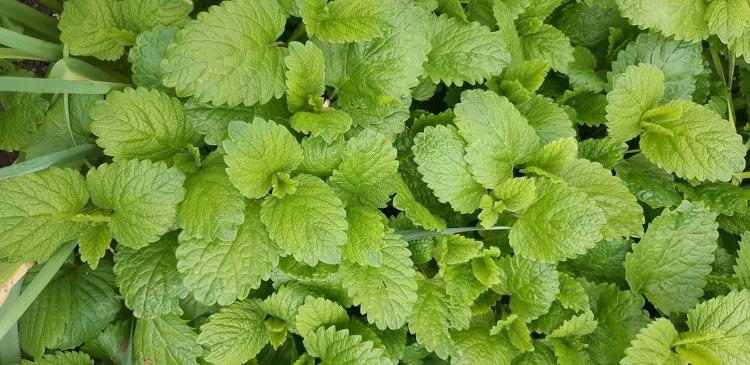
Lemon Balm is a dynamic plant with a delightful citrus aroma. Belonging to the mint family, it is frequently used to ease digestive issues such as stomach pain, nausea, digestive disorders, gas, and bloating. Melissa exhibits cooling, anti-inflammatory, antispasmodic, antiviral, and antidepressant properties. It affects the respiratory, nervous, and digestive systems, and when used topically, it helps treat various skin conditions. Traditionally, a Melissa herbal compress is applied directly to the skin for burns and herpes zoster. Diluted Melissa essential oil is also used to ease toothache, while its tea or tincture is a traditional remedy for migraines, stress, tension, pain relief, and menstrual cramps.
Other Cooling Plants
The list of herbs with cooling effects goes far beyond what is mentioned here. Lavender, chamomile, lemon verbena, sage, elderberry, cardamom, catnip, and passionflower are just a few examples of cooling plants that are wonderful to have on hand. And finally, don’t overlook the delicious berries available in your region—fresh berries not only taste great but also have a cooling and purifying effect on the body.
Cooling Summer Beverage Recipe
On a hot summer day, enjoy this refreshing herbal iced tea. This simple recipe will ensure you feel invigorated on even the sunniest afternoons!
Ingredients:
- ½ tablespoon of fresh or dried Melissa leaves or 60 ml hydrolate
- ½ tablespoon of rose petals (or rosehip petals)
- ½ tablespoon of Kinrožė
- ½ tablespoon of lavender
- 6 cups of water
- ¼ cup of honey (or stevia, elderberry syrup, or any sweetener of your choice)
- One or two slices of fresh lemon or lime
Feel free to add any other herbs you believe would enhance the flavor.
Preparation:
- Pour 6 cups of water into a pot and bring to a boil. Then, turn off the heat and remove the pot from the burner.
- Add the herbal mix of Kinrožė, Melissa, lavender, and rose (additional herbs are optional) to the hot water and cover. Let it steep for 15–20 minutes, then strain out the plant material.
- Stir in the honey or your chosen sweetener.
- Taste the tea and adjust with more water or sweetener if needed.
- Add a slice of lemon or lime along with a few decorative sprigs of fresh lavender, if desired.
- Serve chilled over plenty of ice and enjoy! Store any leftover tea in the refrigerator and consume within two to three days.
Article by: Sigita Vaičiutė

I have been in a close relationship with plants and nature since childhood, yet I still feel like a beginner in the realm of herbal knowledge. For many years, I have been studying, creating, and preparing various elixirs. My goal is to provide you with a broader understanding that allows you to get to know plants and adapt them personally in every situation. My dream is for people to live in harmony with nature so that we can use its resources and wisdom more purposefully, responsibly, and effectively. I have completed courses in Evolutionary Herbalism in the USA at the “Evolutionary School of Herbalism” and many other trainings.
Bibliography:
- Lad, V. & Frawley, D. (1986). The Yoga of Herbs: An Ayurvedic Guide to Herbal Medicine.
- V.M. Jadhav, R.M. Thorat, V.J. Kadam & N.S. Sathe. (2009). Traditional Medicinal Uses of Hibiscus rosa-Sinensis.
- Wood, M. (2004). The Practice of Traditional Western Herbalism.
All claims presented in this article are intended for educational purposes only. This article is not meant to diagnose, treat, or prevent any disease and should not be considered medical advice. Always consult a healthcare professional before using any information for health purposes.
